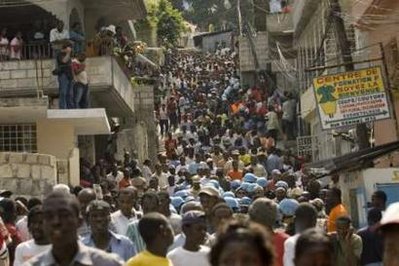
| Want to send this page or a link to a friend? Click on mail at the top of this window. |
More Special Reports |
| Posted November 26, 2008 |
| More Government Gross Incompetence |
| Means Many Haiti Schools Are Unsafe, |
| an Innumerable Number of Citizens Dead |
|
|
|
 |
|
| Residents arrive to look for their relatives and friends near the scene of a school that collapsed in Port-au-Prince November 12, 2008. A two-story school partially collapsed in Haiti's capital on Wednesday and at least nine people were taken to hospitals, five days after another school collapse that killed 95 people, officials said.REUTERS/ Eduardo Munoz (HAITI) | |
|
|
| By JONATHAN M. KATZ, |
| Associated Press Writer |
| Wehaitians.com, the scholarly journal of democracy and human rights |
| More from wehaitians.com |